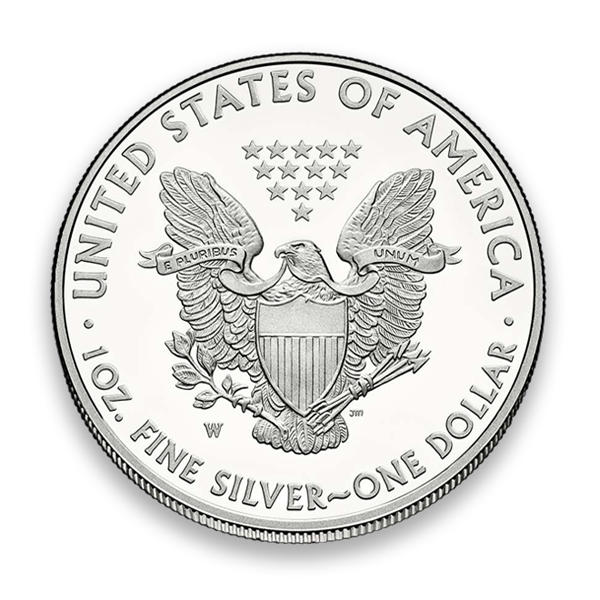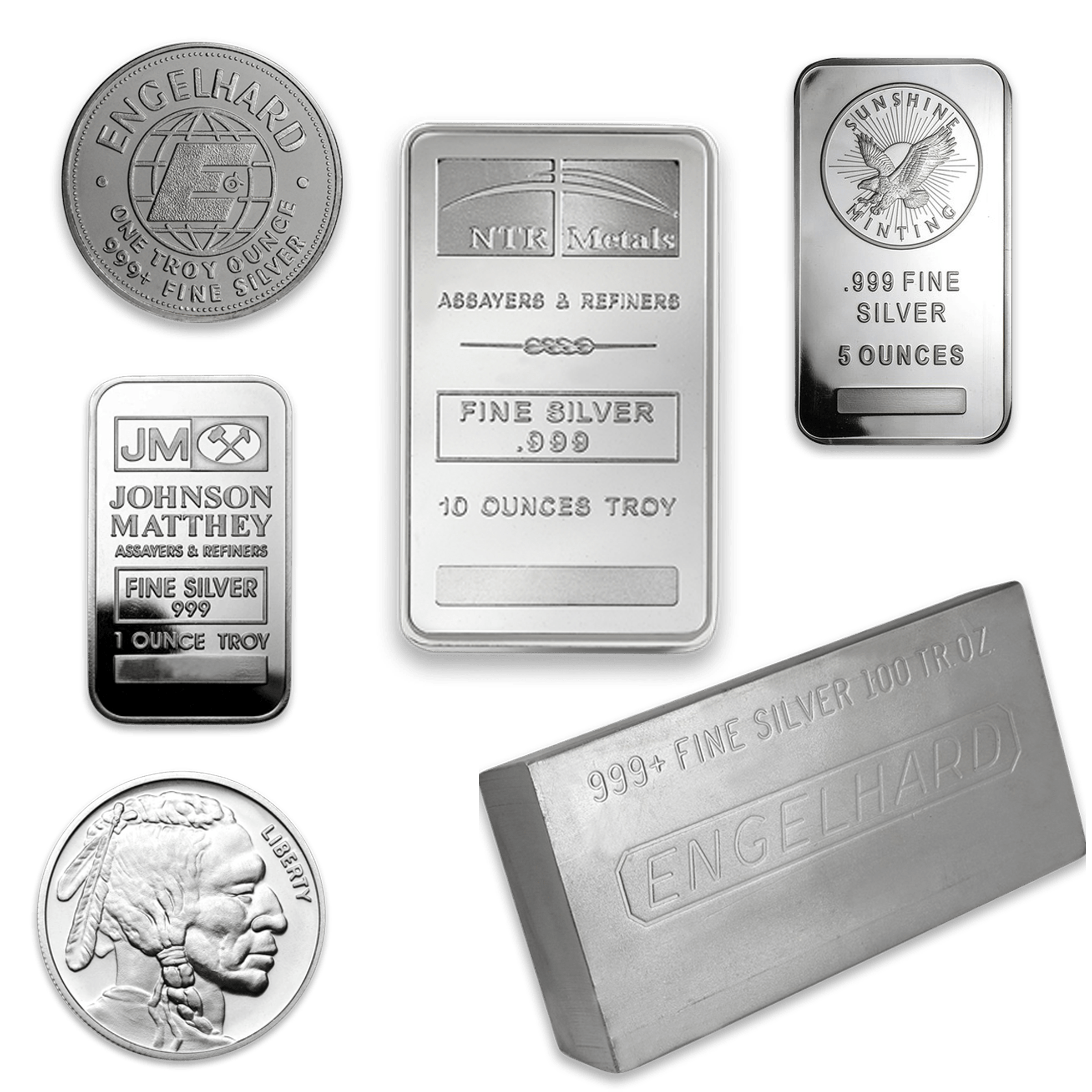Profile Settings
A Brief Explanation of the Most Common Ways to Buy Bullion
As a coin business that buys and sells a lot of precious metal, we are always glad to see someone new wanting to learn more about the options available for investing in gold, silver, platinum or palladium. Often a few sentences are all it takes to explain the most popular ways to invest in the precious metals. But there are other times the conversation can be far lengthier, touching on the more obscure ways to buy like Zodiac Privy Marked Canadian Maple Leaves or silver dollars made privately by the Sovereign Nation of the Poarch Creek Indians. Since most of our customers end up purchasing from three main categories, we thought it might be helpful to write about these three options, hoping that it will prove useful to new investors looking to dip their toes into the world of physical precious metal investing.
Often the first question from someone buying a precious metal is “What’s the best way to buy it?” We get this question all the time and our answer is always the same; there is NO best way. Of course, this answer is surprising to some who are hoping the answer will be obvious, and a quick decision might be made. The truth is that if there was clearly a “best way” to invest in precious metals, we would only sell it in that one best way. But we offer a wide variety of items because we serve a wide variety of individuals with their own reasons for investing and collecting. While keeping the initial cost per ounce low might be of paramount importance to one, another might think it is most important to invest in an item that might cost more but should offer a higher resale price.
There are two different categories of precious metal bullion producers. The first group consists of governmental mints, i.e., the U.S. Mint at West Point or the Royal Canadian Mint in Winnipeg or Ottawa. Technically this first group can be split into two subgroups when it comes to silver investments: bullion silver and coin silver (more on that later). The second group is made of privately held mints, i.e., the Scottsdale Mint or the Engelhard Corporation. For the purposes of this article, we will be narrowing our scope down to dealing with silver items, although most of the info will apply to gold, platinum, or palladium as well. We will be looking at the three main groups of governmental bullion, privately minted bullion, and coin silver. We will look at the most notable pros and cons for each category and hopefully give you clear information for making an educated purchase. Keep in mind that usually what we recommend and what most people end up with is a variety of silver pieces, so do not be afraid to mix and match to diversify. We will start with what you might call the “premium” group, governmental silver. So, let’s dive in.

Governmental silver bullion is a self-explanatory term. It refers to a piece of silver, made to invest in silver as a physical metal, by a governmental mint. Many countries around the world offer a way to buy bullion. The U.S. Mint offers the American Eagle coins, Canada offers the Maple Leaf, Mexico offers the Libertad, Great Britain offers Britannia, Austria offers the Philharmonic, China offers the Panda and so on. These coins are minted in a governmental mint using very high standards of production. This means that usually these coins will be striking to look at and extremely consistent regarding weight, size, and appearance. Governmental Mint coins are monetized for the most part. For example, the American Silver Eagle is monetized as a $1 coin and is recognized as such by the US Government and other governments abroad. Private silver bars are not monetized. This may be important if you are considering crossing international borders. These characteristics mean governmental coins are very recognizable, trusted and would be favored by most investors if all silver were offered at the same price. Unfortunately, cost is one factor that keeps some from investing in, say, the American Silver Eagles. These items will usually cost more than the other two categories of silver. Anyone interested in getting the most silver for their money will likely not be interested in governmental bullion because it usually costs a couple dollars more. This is a premium piece of silver and is sold at a premium price. But for those who are looking for the most recognizable and trusted form of bullion, governmental silver is the way to go. Recognize also that the increased cost of purchase means that you can expect to also sell the governmental silver at an increased price, so that initial up-charge is at least partially offset. Like anything else in life, a premium product costs more but should also yield more at the time of resale, because it is simply a more costly product. One other downside of governmental bullion is the lack of variety in design and size. Most governmental mints do not make bullion in bars, or in sizes larger than 1 oz (and if they do, they are often sold at a much higher price per ounce). So, if you are interested in something other than a one-ounce coin, you will probably need buy something that is privately minted.
Buying precious metal made buy a private mint or refiner is the most common way to buy mainly silver but to some extent gold, platinum, and palladium. These items will come in rounds much like coins or in bar form. They can range in size from as little as 1 Grain which equals 0.002 of a Troy ounce all the way up to 1,000-ounce silver bars the size of a shoe box weighing in excess of 60+ pounds. The most common sizes are 1/10th oz, ¼ oz, ½ oz and 1 oz for gold and platinum coins and rounds, 1 gram all the way up to 1 kilo (1,000 grams or 32.15 oz’s) for gold bars, ½ oz, 1 oz, 5 oz, 10 oz and 100 oz for silver bars and rounds. Platinum and Palladium generally come in 1 oz governmental coin form or 1 oz private mint bar form. This form of precious metal is NOT monetized meaning that if you cross and international border with these items, you must calculate the intrinsic value in your declarations. Premiums tend to be lower the larger in size you buy meaning that if you bought 100 1-oz silver rounds, it would generally be cheaper to buy a 100-oz silver bar instead.
The third most common way to buy mainly silver but gold also is with older circulated 90% US silver dimes, quarters, halves, and dollars as well as older US gold coins that circulated prior to 1933. You can easily buy any amount of silver you choose in this format knowing that the price is figured by using the face value of the coins. For example, you may want to purchase $10 face value in 90% silver which is approximately 7.15 oz’s of silver. Investors typically buy $1,000 face value bags of 90% silver to save on premiums. These bags contain approximately 723 ounces of silver assuming the coins inside are not overly worn. Circulated common date Morgan and Peace dollars are another way to own silver. These coins actually contain .7734 oz’s of silver which is more than $1.00 of mixed dimes, quarters or halves. As a result of this, premiums are higher on older US dollars. Older US Gold is popular especially uncirculated $20 gold coins which contain .9675 oz’s of pure gold. You can purchase many common date uncirculated $20 gold coins for a small premium above their melt value. Common date circulated, jewelry grade or worn other denominations can be had for a small fraction above their melt value. Lastly, you can purchase foreign silver and gold coins that circulated. Many of these old world silver coins can be bought for a very small premium above their melt value and many of them will be from the 1800’s. Same goes for older world gold coins such as British Sovereigns, French 20 Francs, Swiss 20 Francs, Dutch Guilders, Italian 20 Lira, Danish 20 Kroner etc. You can not only buy gold and silver but put together a neat collection of coins from around the world paying low premiums. Most if not all of these world coins are still monetized.
Most of the time, the question of what type of silver or gold to buy comes down to a list of pros and cons. When it comes to governmental silver, there are a lot of pros that are attractive. Really the only major item in the “con” list would be cost. As we have said already, most if not all investors in silver would be buying governmental silver if it did not cost more than other types. It is a more desirable product to most. For some, the benefits will outweigh the additional cost and for others they will not. So, as you think about investing in silver and gold, keep in mind what was said at the beginning, there is NO best way to invest in precious metals. What is best for one is not for another, and you are the only one who can decide what is best for you. So, consider your options and jump in! I look forward to hearing from you! (put your phone number here as you did for the others.

